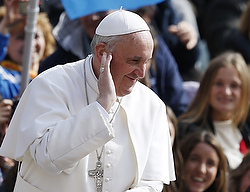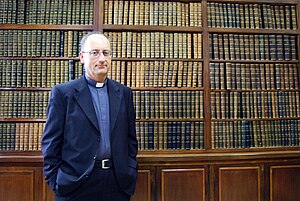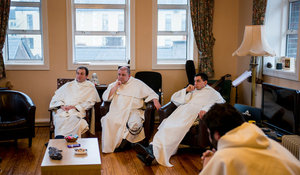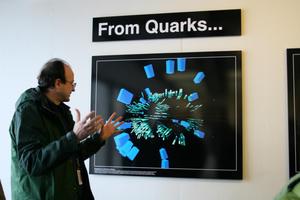The Knights of Columbus are not allowed to officially exist on Gonzaga’s University’s campus because they don’t meet a criterion: that non-Catholics be admitted to the group. The decision by the University Student Life office was communicated by Sue Weitz with the help of Kassi Kain. The KoC is a fraternity (of men) who are practical Catholics.
Month: April 2013
La Civiltà Cattolica will bridge Church and postmodern world
Here then, is where the mission of a cultural journal such as La Civiltà Cattolica fits in: active participation int he contemporary cultural debate, both to propose and at the same time to spread the Christian faith in a serious way. Its purpose is both to present it clearly and in fidelity to the Magisterium of the Church, and to defend without polemics the truth that is sometimes distorted by unfounded accusation directed at the Ecclesial Community. I would like to point out the Second Vatican Council as a beacon on the path that La Civiltà Cattolica is called to take.
In defense of the Pope, La Civiltà Cattolica‘s is understood to be supportive of the Church by following the indications of the Second Vatican Council. As a journal of the Society of Jesuit and the Church its work to show a relationship faith and reason, faith and culture, faith and science, faith and the public order;to understand the world in which we live in light of the Incarnation. The Journal cuts across the various sectors of the intellectual, spiritual and cultural ambits showing a particular attentiveness with the Catholic Church through the Secretary of State; La Civiltà Cattolica is considered to be not official but authoritative.
Pope Francis to be decisive in sexual abuse crimes
 The Pope is meeting with all the heads of the various departments of the Holy See.
The Pope is meeting with all the heads of the various departments of the Holy See.
Irish Dominicans cling to tradition, are renewed
The link this article, “For Friars, Finding Renewal by Sticking to Tradition,” leads you to a story about the Irish Dominicans who have had a resurgence in vocations by a keen attention to their tradition and the Church’s. While the author concentrates on the wearing of the habit, there are other things that have been recovered: an authentic companionship (communal life), faithfulness to the Church, the wearing of the habit and the common, evangelical mission and conversion of mind and heart. Kudos for the Irish OPs in recognizing the signs so as not to diminish further, or even die.
I can’t help but think that George Weigel’s latest book, Evangelical Catholicism, reflects what the future of the Church will be, including life in religious orders, not only in the USA, but around the world. You have to read, and re-read this book. Plus, I am tending to think that Cardinal Dolan was correct in saying that the Church in the USA is more concerned with the institution than she is with being missionary. Would that it be the case that the Benedictines could recognize what the Irish OPs did. I offer this article so that we all may share in the Irish OPs joy for their own renewal. We can benefit by their witness.
St. Edmund’s Retreat, Enders Island at Mystic, CT
 Thursday’s beautiful spring weather jettisoned me (and a friend, James) to take a road trip to visit Saint Edmund’s Retreat House in Mystic Connecticut.
Thursday’s beautiful spring weather jettisoned me (and a friend, James) to take a road trip to visit Saint Edmund’s Retreat House in Mystic Connecticut.
Pope Francis: …some favorite things
 Get to know the Pope…. How well do you know Francis, bishop of Rome?
Get to know the Pope…. How well do you know Francis, bishop of Rome?
Father Joseph Walijewski’s cause for beatification opened
Father Joseph Walijewski (1924-2006), a missionary to Latin America, is now part of a long list of Americans who are being studied by the Church for possible sainthood.
Father Walijewski’s cause for beatification opened by Bishop William P. Callahan, bishop of the Diocese of La Crosse, WI, March 19, 2013. Dr. Andrea Ambrosi will be the postulator. Walijewski was born to poor Polish immigrant parents in Grand Rapids, Michigan on March 15, 1924; ordained priest for the Diocese of La Crosse in April 1950; and began missionary work in Bolivia in 1956; he died on April 11, 2006, suffering pneumonia and acute leukemia. Father Joseph also served in Ecuador and Peru. While in Peru, he helped organize breakfast stations that fed 8,000 children per day where he founded in 1987 the Lima orphanage Casa Hogar Juan Pablo II, the House of John Paul II.
Jesuit presence therefore influence in Rome
A significant Jesuit presence in key places for the Church’s ministry of proclaiming and living the Gospel exists that few may not be aware of. Since the time of Saint Ignatius of Loyola, the Society has done some remarkable things for the good of the Church. And every Pope since Paul III has relied on generosity of thinking and action of the Jesuits in Rome. Pope Francis has asked the Society to continue… Presence means influence.
Interesting stats:
- 12 Pontifical residences in Rome are staffed by Jesuits;
- 3 Pontifical institutions for higher learning in Rome: The Gregorian University, the Oriental and Biblical Institutes;
- 1 Radio center (Vatican Radio);
- 1 journal (La Civiltà Cattolica);
- 6 Jesuit cardinals: but only one of them participated in the 2013 conclave, Jorge Mario Cardinal Bergoglio, archbishop of Buenos Aires (Argentina). The other Cardinal entitled to participate, Julius Riyadi Cardinal Darmaatmadja, Archbishop-emeritus of Jakarta (Indonesia), was unable to attend due to ill health;
- The Pontifical Gregorian University indicates that there are 57 Cardinal alumni of Jesuit pontifical institutions in Rome, the Gregorian and the Biblicum (49.6% of all participants in the Conclave). Several of them were also professors at the Gregorian University: Raymond Leo Cardinal Burke, William Joseph Cardinal Levada, Velasio Cardinal DePaolis, CS, Timothy Michael Cardinal Dolan, Francesco Cardinal Coccopalmerio, and Walter Cardinal Kasper (not an exhaustive list.);
- And other works coordinated by the Jesuit Curia under the leadership of the Jesuit Superior General.
The God Particle to be discussed in NYC
Crossroads Cultural Center AND the American Bible Society are hosting a presentation on the latest discoveries in particle physics at an event open to the public and free of charge.
Saturday, April 13
6:30pm
American Bible Society (at 61st & Broadway)
Dr. Giorgio Ambrosio, Applied Scientist, Fermilab, and Dr. Stephen Barr, Professor of Physics and Astronomy at the University of Delaware.
The announcement reads,
The recent announcement of the discovery of a Higgs-like particle at the Large Hadron Collider, the world’s largest and most powerful particle accelerator, has generated enormous shockwaves in the press. Some people call it The God Particle.
Why such an awesome name? Can it really be the key for unlocking some of the mysteries of the universe? Can it help us understand the origin of mass, for instance? Can it tell us anything about ourselves and our place in the universe?
In their talks, the two speakers will address these and other related questions. The talk is geared to the general public and will include a “virtual” tour of the Large Hadron Collider at CERN (the European Organization for Nuclear Research) in Switzerland.
Do you really want to recognize the Lord? Emmaus is certainty
What was true and real for the Apostles and disciples of the Lord 2000 years ago IS TRUE AND REAL for us today, right now. At least that’s what I believe. The Emmaus event is not an abstract account but a true encounter with a clear direction and goal: knowing that the Lord Jesus, once crucified and now risen, is alive as He said. I find myself asking:
Can you say with the same degree of certainty as the disciples of Emmaus came to understand, that it is a true joy to walk with others in and outside the Church over the years in light of the presence of the Risen Lord? Do you really believe it is your vocation to recognize the Risen Lord in the breaking of the Bread, and to help others to the same? How do you account for the joy in knowing the Lord and accepting the reality of the Lord’s enduring Presence in the Eucharist? Are ready to enter into worship upon recognizing the Lord at the Supper of Emmaus?
The question becomes for the Christian: what do you really want from the Risen Lord?










